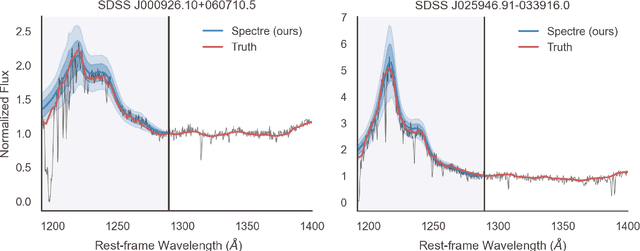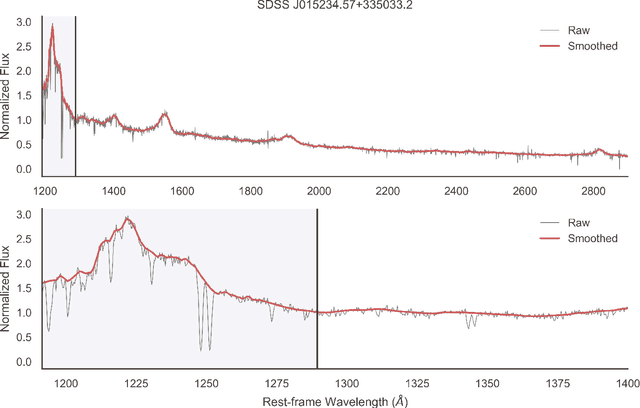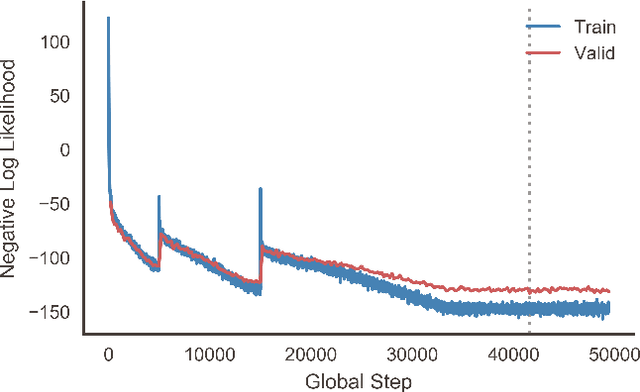Fully probabilistic quasar continua predictions near Lyman-α with conditional neural spline flows
Paper and Code
Jun 02, 2020



Measurement of the red damping wing of neutral hydrogen in quasar spectra provides a probe of the epoch of reionization in the early Universe. Such quantification requires precise and unbiased estimates of the intrinsic continua near Lyman-$\alpha$ (Ly$\alpha$), a challenging task given the highly variable Ly$\alpha$ emission profiles of quasars. Here, we introduce a fully probabilistic approach to intrinsic continua prediction. We frame the problem as a conditional density estimation task and explicitly model the distribution over plausible blue-side continua ($1190\ \unicode{xC5} \leq \lambda_{\text{rest}} < 1290\ \unicode{xC5}$) conditional on the red-side spectrum ($1290\ \unicode{xC5} \leq \lambda_{\text{rest}} < 2900\ \unicode{xC5}$) using normalizing flows. Our approach achieves state-of-the-art precision and accuracy, allows for sampling one thousand plausible continua in less than a tenth of a second, and can natively provide confidence intervals on the blue-side continua via Monte Carlo sampling. We measure the damping wing effect in two $z>7$ quasars and estimate the volume-averaged neutral fraction of hydrogen from each, finding $\bar{x}_\text{HI}=0.304 \pm 0.042$ for ULAS J1120+0641 ($z=7.09$) and $\bar{x}_\text{HI}=0.384 \pm 0.133$ for ULAS J1342+0928 ($z=7.54$).
 Add to Chrome
Add to Chrome Add to Firefox
Add to Firefox Add to Edge
Add to Edge